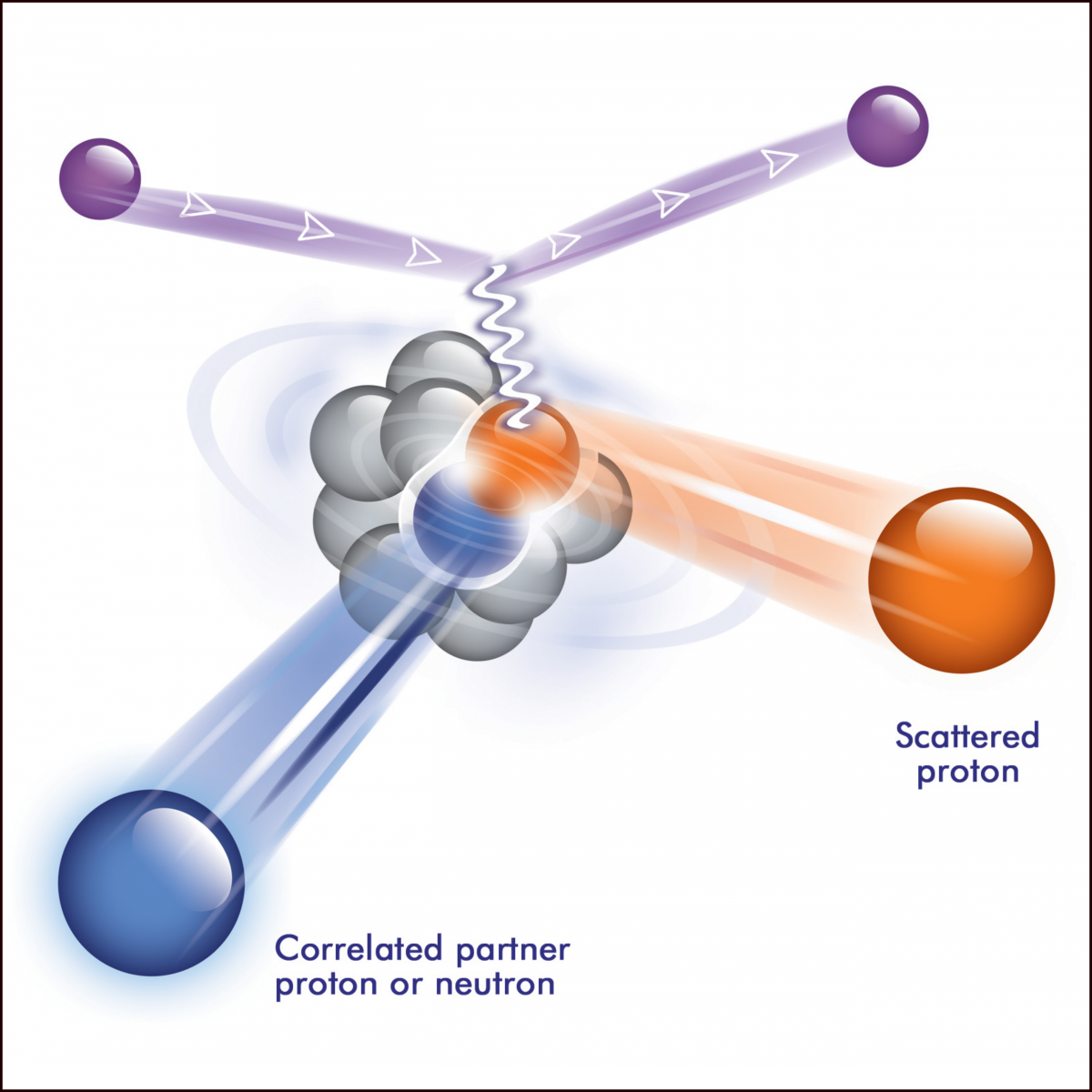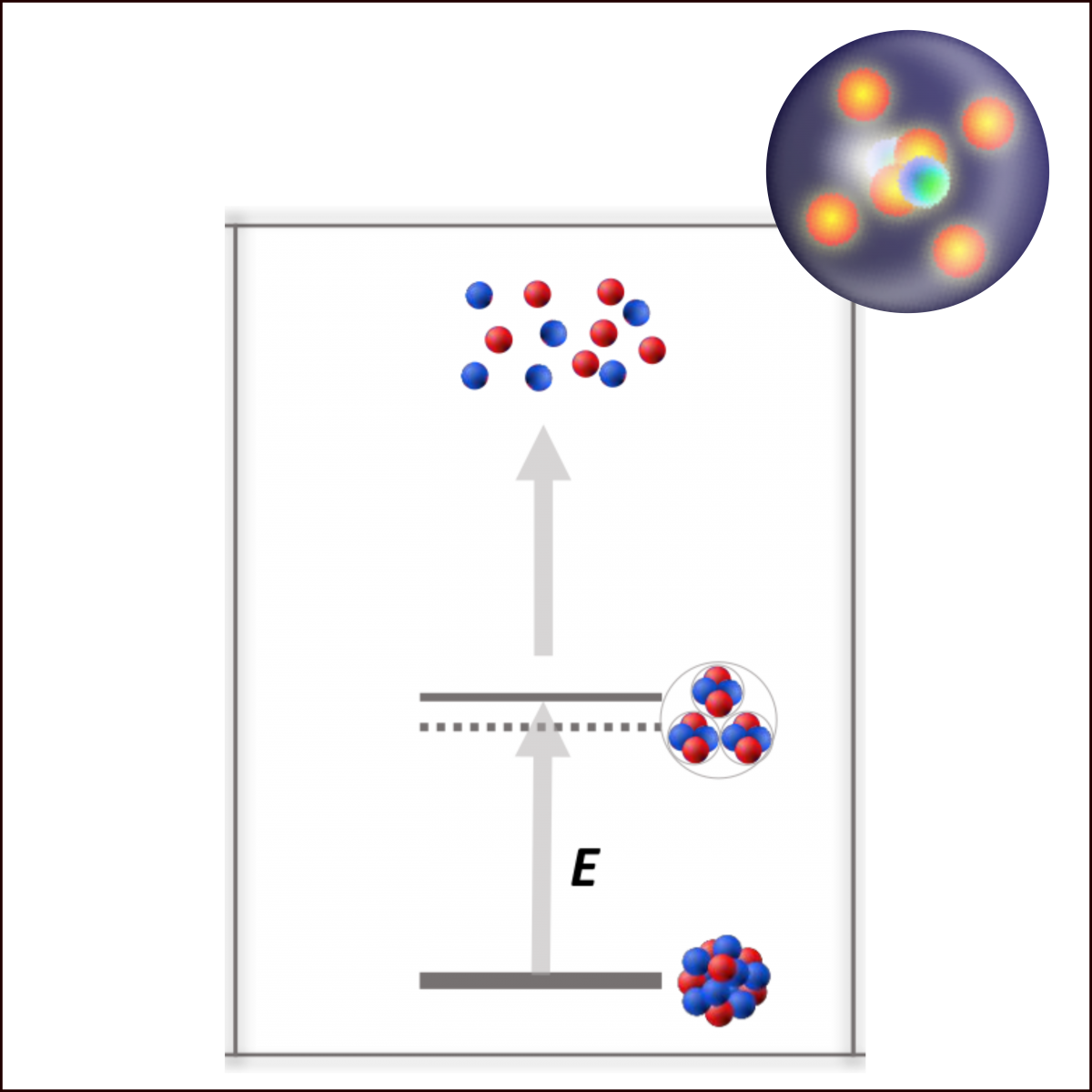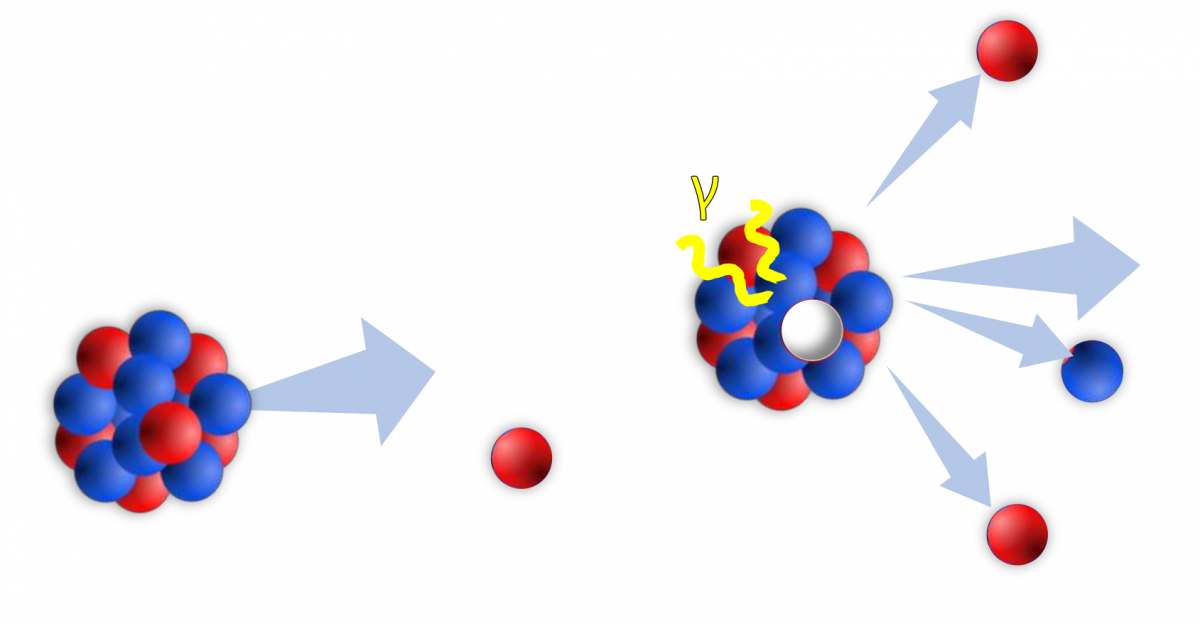My current research focuses on the study of the fundamental interaction between nucleons in atomic nuclei to contribute to a universal picture of the atomic nucleus and gain insight into astrophysical structures like neutron stars. I am particularly interested in Short-Range Correlations (SRCs) and exotic nuclear many-body systems. Such exotic very short-lived nuclei with extreme neutron-to-proton ratio exhibit a variety of fascinating quantum-mechanical phenomena and are most sensitive probes to the nuclear interaction. I develop, lead, and analyze experiments at particle accelerators around the world.
Physics
| Exotic Nuclei | Short-Range Correlations (SRC) |
| Nuclei with large neutron excess exhibit quantum-mechanical phenomena like nuclear-structure evolution or halo and cluster formation. During my PhD I studied the single-particle structure of the neutron-rich fluorine (Z=9) isotopes 29F and 30F and found that their shell-structure is strongly modified what defines the new lower boundary of the "Island of Inversion". | SRCs are quantum fluctuations in the nucleus that lead to the formation of nucleon-nucleon pairs with extremely large relative momentum. In fact, SRCs are a unique way to study the NN interaction at short distance. Traditionally being studied in electron scattering, I am leading a pioneering effort to study SRCs using hadronic probes in inverse kinematics, opening a new path way for SRC research. I lead experiments at BM@N at JINR and R³B at GSI-FAIR that proof the success of the new method and allowed for the first experiment on a neutron-rich short-lived 16C nucleus. I am also working on efforts to measure three-nucleon correlations. |
 |
 |
| Thesis ; Study of 28F [PRL 2020] | SRC in inv. kin. [Nat Phys 2021] |
| Open Quantum Systems (OQS) | Neutron Correlations |
| Very neutron-rich nuclei at and beyond the dripline couple to the continuum, by which their structure is significantly impacted. These quantum systems can even be unbound. We find OQS also in particle or atomic physics, but we know little about structure and behavior of nuclear OQS. In my PhD work, I studied the neutron-unbound 30F. At the same setup, we also observed the resonance of the pure four-neutron system. | In neutron-rich nuclei the formation of nucleon clusters seems to be favored. Even though neutrons are charge neutral, the strong force can mediate persistent neutron correlations. Their understanding is crucial for the description of neutron-star matter. The search of intrinsic di-neutron correlations is ongoing. I did not find di-neutron decays from unbound states in 29F*, but observed sequential decays instead. Instead, the 26O nucleus is seen as a candidate for strong di-neutron correlations, that would also reflect in a surprisingly "long" lifetime for an unbound nucleus. I developed a new method to measure the lifetime of unbound nuclei in the pico-seond regime, which I could also realize and apply in an experiment at SAMURAI at RIBF. |
 |
 |
| Thesis ; Tetraneutron [Nature 2022] | Lifetime method [NIM A 2017] |
| Nuclear Interaction | Neutron Star Matter |
| To develop a unified picture of the atomic nucleus we have to understand both the long- and short-range interaction. Additionally to efforts mentioned already, I proved experimentally at JINR that high-energy quasi-elastic proton scattering in complete kinematics probes ground-state momentum distributions in nuclei and thus the extraction of single-particle nuclear structure is possible. The nucleus becomes "transparent" in these reactions. In terms of SRCs, I also use quasi-elastic electron scattering off nucleon-pairs in neutron-rich nuclei at Jefferson Lab to study the short-range interaction and behavior in asymmetric many-body systems. | Extremely neutron-rich nuclei or pure few-neutron systems are unique ways to possibly study cold dense nuclear matter, similar to neutron-star matter, and to develop a microscopic understanding of neutron stars. My research attacks this challenge from several directions by understanding the nuclear interaction and cummulates in the study of SRCs in neutron-rich nuclei and studying few-body neutron systems and their correlations. |
 |
 |
| Transparent nucleus [Nat Phys 2021] | Review [EPJA 2023] |
Experiments and Hardware Work
| Spectroscopy in Inverse Kinematics | Electron Scattering |
| Performing experiments in inverse kinematics offers unique advantages allowing for the measurement of all reaction particles and the full final state. It is also the only way to perform the spectroscopy of short-lived exotic nuclei. I developed, lead, and analyzed experiments in inverse kinematics at GSI-FAIR, RIBF/RIKEN, and JINR. We transfered that method to the study of SRCs in proton scattering. Following a successful pilot experiment, we have started a new research program for SRC studies in exotic nuclei. | Complementary to SRC studies in inverse kinematics using hadronic probes, I am also using electron scattering to specifically study SRCs in neutron-rich but stable nuclei. Using the electromagnetic interaction proves SRC universality. I am analyzing data from the CLAS12 experiment at Jefferson Laboratory |
 |
 |
| Neutron Measurements | Lifetime Measurement |
| As I am studying neutron unbound system, it is essential to measure decay neutrons directly. Even though neutrons are difficult to detect due to their neutral charge, the experiments in inverse kinematics provide certain advantages. I am an expert in the measurement of fast neutrons using granular scintillator-detector arrays. During my PhD, I have been working extensively with the NeuLAND detector. | I developed a new method to precisely measure the lifetime of neutron unbound states in the picosecond regime (10^-12 s). I applied the approach experimentally to the two-neutron decay of 26O. If confirmed, 26O would be the first case a radioactive decay via neutron emission. I ran the experiment at the SAMURAI setup at RIBF/RIKEN. Besides the neutron measurement, the usage of silicon detectors around a special heavy-target stack was crucial to the success of the measurement. |
| Scintillator Detectors | |
| In addition to the measurement of neutrons, I am using scintillator detectors in different configurations for high-resolution time-of-flight and energy-loss measurements. For the study of SRCs in inverse kinematics by using proton-knockout reactions, I developed and operated a non-magnetic ToF-Calorimeter detector for a high-resolution ToF measurement and the distinction between high-energy protons and pions. Two 1.5 x 2.0 m² detector walls with 240 readout channels were built at JINR. | |
 |
Experiment Collaborations I am involved in:
- Data analysis for 29F and 30F study
- Neutron detector work
- Developing and leading 26O lifetime experiment
- Developing and running SRC experiments on exotic nuclei
BM@N at JINR:
- Data analysis of SRC pilot experiment
- Developing and leading improved SRC experiment
- Detector development: ToF-Calorimeter, high-resolution start-time detectors, in-beam energy-loss detectors, laser-calibration system
- Data analysis for SRC study